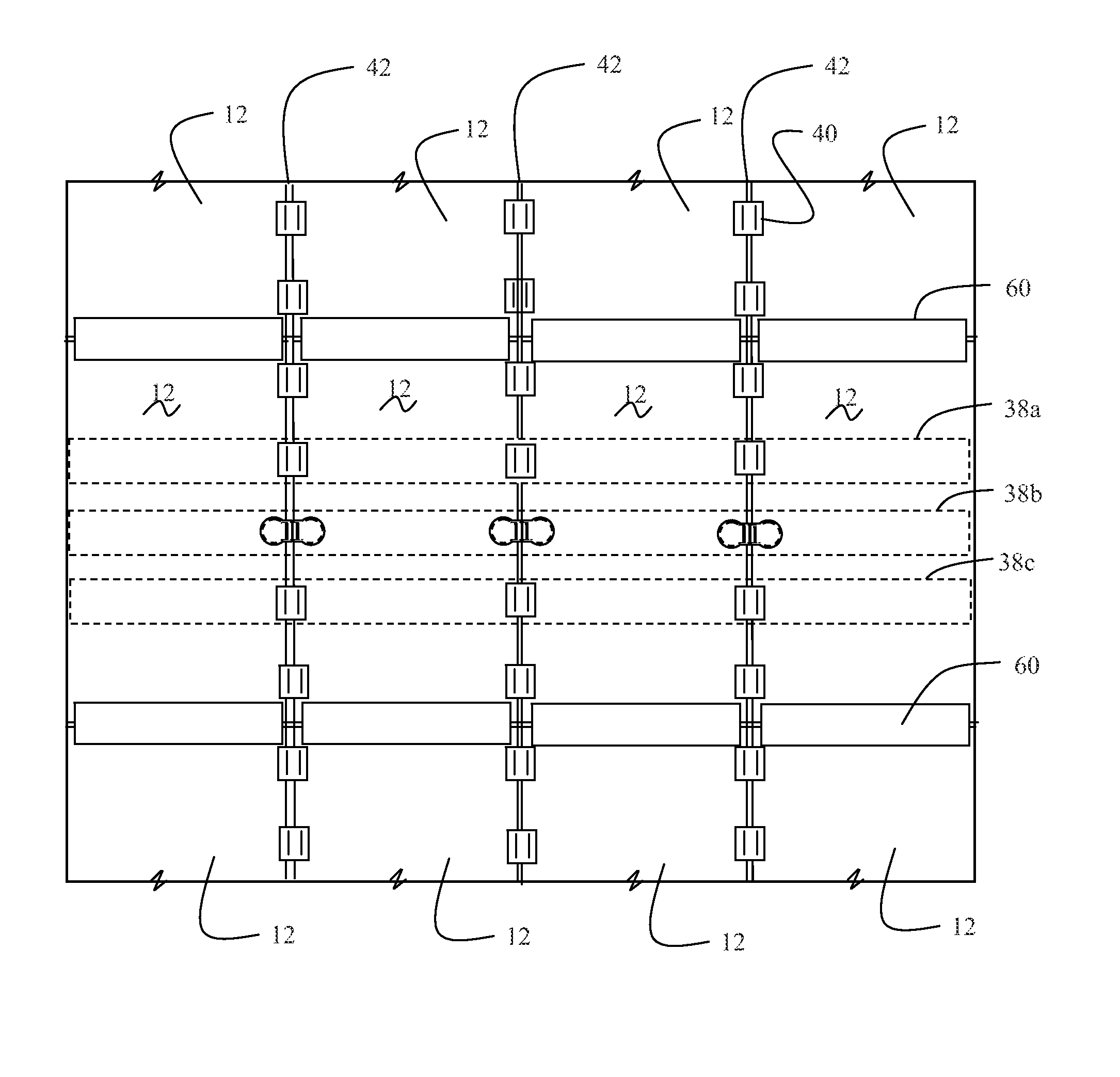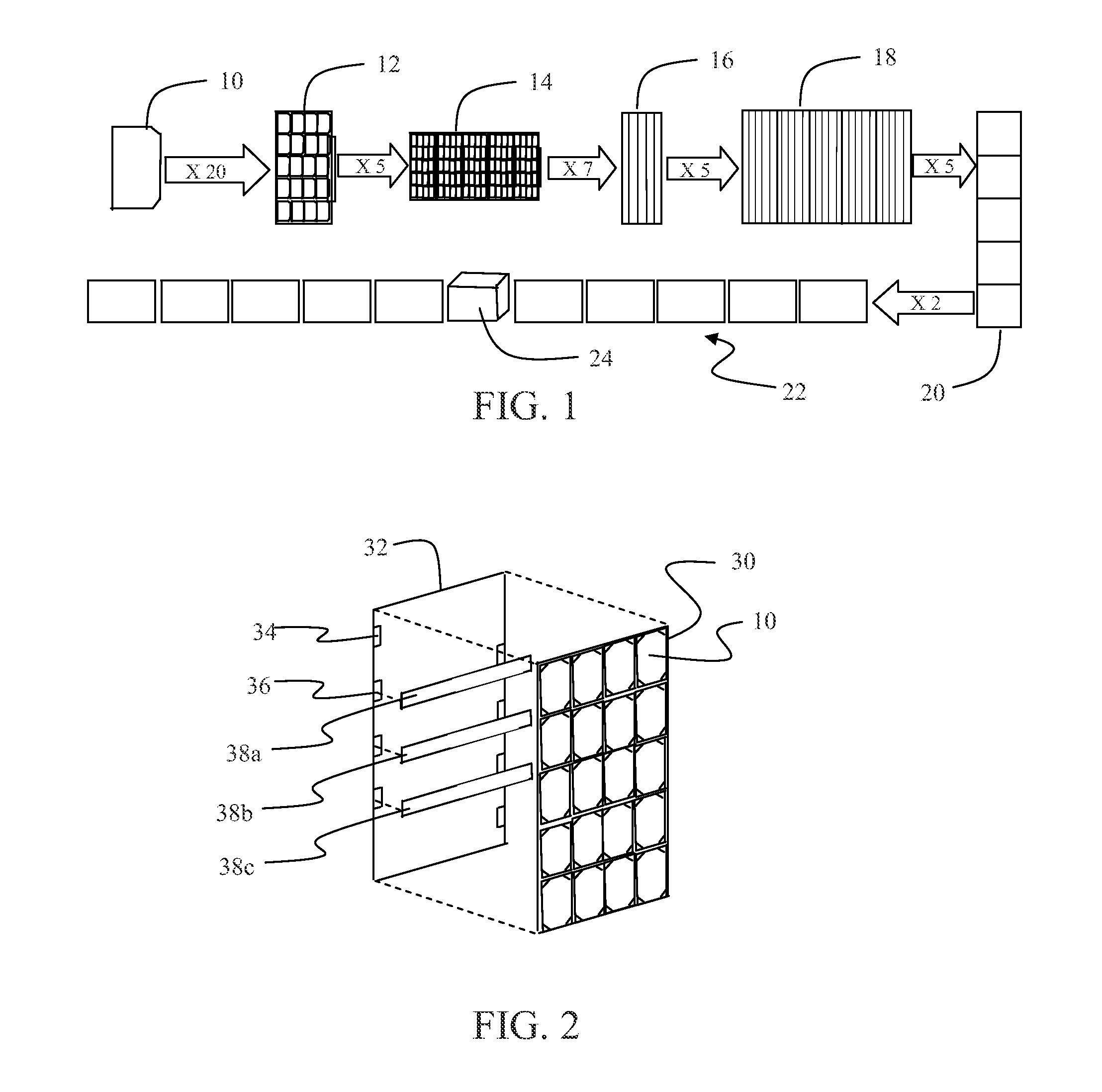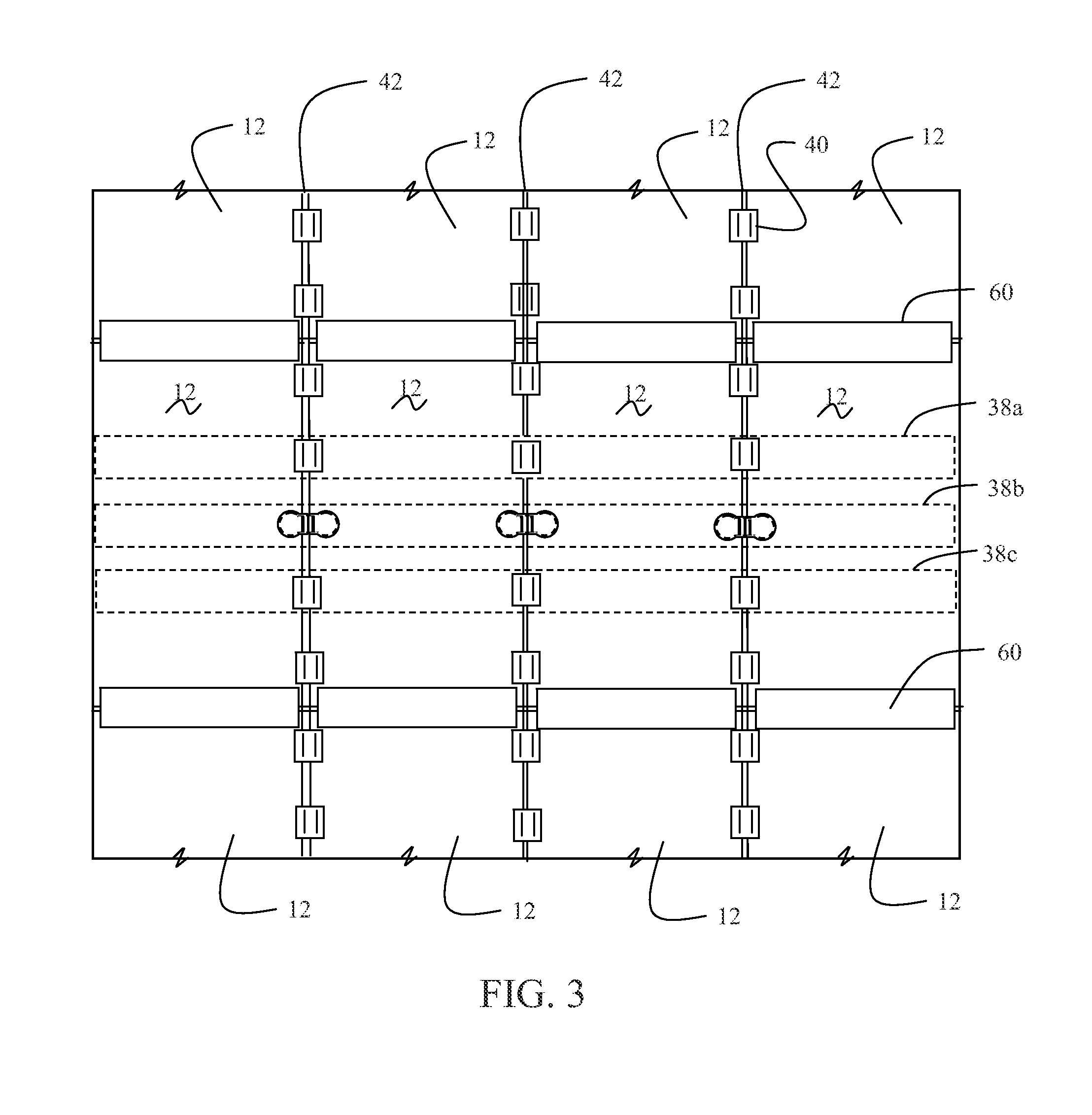Atomic oxygen and electrostatic-resistant, flexible structure for space applications
a flexible, atomic oxygen technology, applied in the field of space structures, can solve the problems of large rectangular panels that are not ideal for packing, large substrate thickness, and difficult scaling, and achieve the effects of reducing the number of insulating panels
- Summary
- Abstract
- Description
- Claims
- Application Information
AI Technical Summary
Benefits of technology
Problems solved by technology
Method used
Image
Examples
Embodiment Construction
[0024]The embodiments described herein provide a flexible solar array with connection elements that utilize layered and segregated conductive and non-conductive tapes and adhesives as well as conducting substrates to provide an enhanced mechanical structure while allowing dissipation of electrostatic charges that build up on the structure due to incident radiation in the space environment. In addition, a carbon nanotube coating provides both protection from atomic oxygen and, as incorporated in the overall enhanced electro-mechanical structure, a continuous electrostatic dissipative path to spacecraft ground, between areas not covered by the conductive tape or adhesive. The coating is also highly emissive, thereby improving thermal management and efficient operation of the solar array.
[0025]As shown in FIG. 1, a solar array employing the embodiments described in detail herein typically incorporates solar cells 10 which are electrically connected in series (approximately 20 solar cel...
PUM
| Property | Measurement | Unit |
|---|---|---|
| thickness | aaaaa | aaaaa |
| thickness | aaaaa | aaaaa |
| thickness | aaaaa | aaaaa |
Abstract
Description
Claims
Application Information
 Login to View More
Login to View More - R&D
- Intellectual Property
- Life Sciences
- Materials
- Tech Scout
- Unparalleled Data Quality
- Higher Quality Content
- 60% Fewer Hallucinations
Browse by: Latest US Patents, China's latest patents, Technical Efficacy Thesaurus, Application Domain, Technology Topic, Popular Technical Reports.
© 2025 PatSnap. All rights reserved.Legal|Privacy policy|Modern Slavery Act Transparency Statement|Sitemap|About US| Contact US: help@patsnap.com



